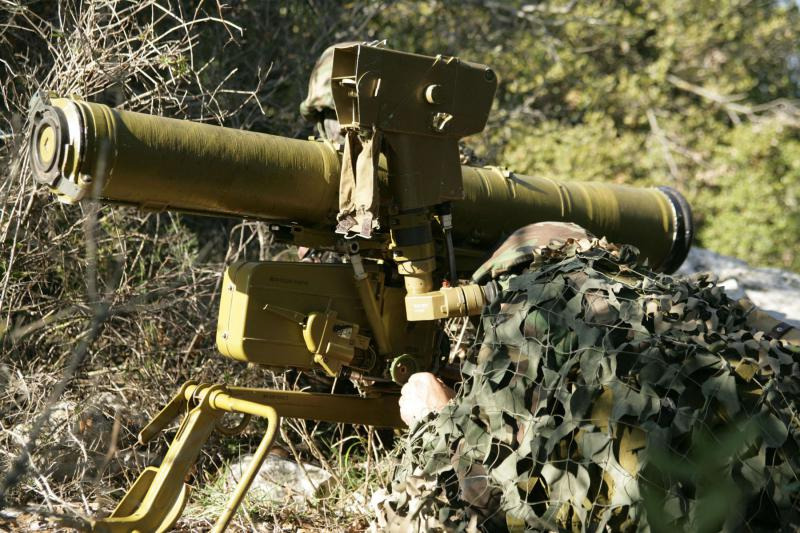The projectile fired from Lebanon’s South governorate on July 6 at the separation line with Israel was an anti-tank guided missile, the Israel Defense Forces (IDF) said, dismissing an earlier assessment that the projectile was an unguided rocket.
Part of the missile was found in Israeli territory, while another part landed in Lebanon. The IDF said that it was still looking into who was behind the attack. There was no immediate claim of responsibility.
The IDF said that in an initial response to the attack it carried out artillery strikes against the area in southern Lebanon from which the missile was launched.
Lebanon’s Al-Manar TV, which is linked to Hezbollah, reported that at least 15 artillery shells were fired at an open hill between the villages of Kfarchouba and Halta.
Defense Minister Yoav Gallant vowed that Israel would respond to the rare missile attack at the place and time of its choosing.
“Against any violation of our sovereignty and challenge to our presence in our country, we will respond at the place and time of our choosing, in overt and covert ways, that will exact a clear price from those responsible,” said Gallant at a memorial event for fallen soldiers of South Lebanon Army, a Christian militia supported by Israel between the mid-1980s and the summer of 2000.
The unusual missile attack came amid rising tensions along the separation line after Hezbollah set up two tents several dozen meters into the Shebaa Farms, which were occupied by Israel during the 1967 Six Day War and later annexed along with the Syrian Golan Heights. Lebanon says the area belongs to it.
In a statement released a minutes before the attack, Hezbollah condemned what it called “dangerous measures” taken by the IDF in the northern part of Ghajar. Hezbollah accused Israel of erecting a wire fence and building a cement wall around the village.
“Recently, the Zionist occupation forces have taken serious measures in the northern part of the border town of Ghajar, the Lebanese part that the United Nations recognizes as a part of the Lebanese territory, unarguably and undisputedly.
These measures included the establishment of a barbed-wire fence and the construction of a concrete wall around the whole town, similar to what it does on the border between Lebanon and occupied Palestine.
This separated the village from its natural historical surroundings within the Lebanese territories, and the occupation forces completely imposed their authority on both the Lebanese and occupied parts of the town, subjugating it to their administration, concurrently with opening the village to tourists coming from within the Zionist entity.
This serious action and significant development is a complete occupation of the Lebanese part of Ghajar by force of arms and imposition of a fait accompli, which is not merely a routine violation as the occupation forces are accustomed to every now and then.
In the face of this serious development, we call upon the Lebanese state in all its institutions, especially the Lebanese government, and we also call upon the Lebanese people in all its political and civil powers to act to prevent the establishment of this occupation and cancel the aggressive measures it has committed, and to work on liberating this part of our land and return it to the homeland,” the statement reads.
It is very likely that the missile attack was carried out by Hezbollah as a warning to Israel. While previous rocket attacks from southern Lebanon were blamed on Palestinian armed factions, these factions are not known to possess anti-tank guided missiles. Only the Lebanese military and Hezbollah have such systems.
The attack didn’t cause any losses. However, the IDF will likely attempt to respond in a way or another to maintain deterrence against Hezbollah.
MORE ON THIS TOPIC:




